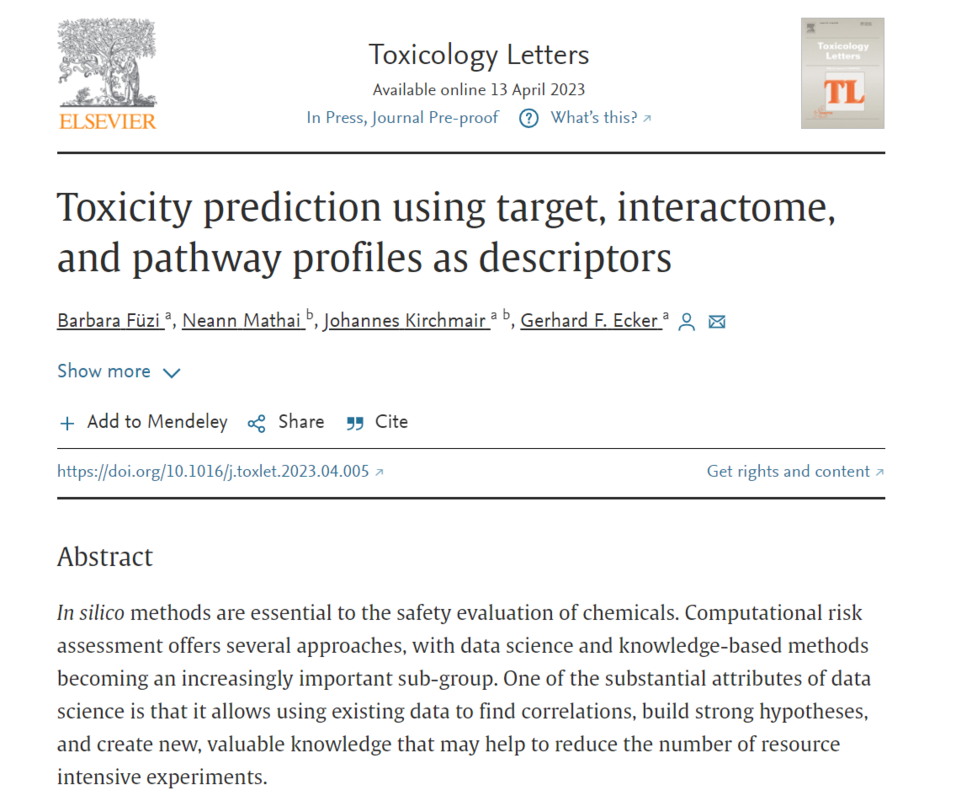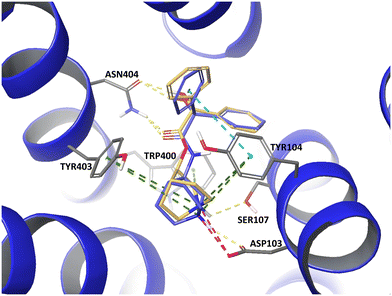Barbara Füzi, Neann Mathai, Johannes Kirchmair, Gerhard F. Ecker, Toxicity prediction using target, interactome, and pathway profiles as descriptors, Toxicology Letters, 2023
DOI
https://doi.org/10.1016/j.toxlet.2023.04.005
Abstract
In silico methods are essential to the safety evaluation of chemicals. Computational risk assessment offers several approaches, with data science and knowledge-based methods becoming an increasingly important sub-group. One of the substantial attributes of data science is that it allows using existing data to find correlations, build strong hypotheses, and create new, valuable knowledge that may help to reduce the number of resource intensive experiments.
In choosing a suitable method for toxicity prediction, the available data and desired toxicity endpoint are two essential factors to consider. The complexity of the endpoint can impact the success rate of the in silico models. For highly complex endpoints such as hepatotoxicity, it can be beneficial to decipher the toxic event from a more systemic point of view. We propose a data science-based modelling pipeline that uses compounds` connections to tissue-specific biological targets, interactome, and biological pathways as descriptors of compounds. Models trained on different combinations of the collected, compound-target, compound-interactor, and compound-pathway profiles, were used to predict the hepatotoxicity of drug-like compounds. Several tree-based models were trained, utilizing separate and combined target, interactome and pathway level variables. The model using combined descriptors of all levels and the random forest algorithm was further optimized. Descriptor importance for model performance was addressed and examined for a biological explanation to define which targets or pathways can have a crucial role in toxicity. Descriptors connected to cytochromes P450 enzymes, heme degradation and biological oxidation received high weights. Furthermore, the involvement of other, less discussed processes in connection with toxicity, such as the involvement of RHO GTPase effectors in hepatotoxicity, were marked as fundamental. The optimized combined model using only the selected descriptors yielded the best performance with an accuracy of 0.766.
The same dataset using classical Morgan fingerprints for compound representation yielded models with similar performance measures, as well as the combination of systems biology-based descriptors and Morgan fingerprints. Consequently, adding the structural information of compounds did not enhance the predictive value of the models. The developed systems biology-based pipeline comprises a valuable tool in predicting toxicity, while providing novel insights about the possible mechanisms of the unwanted events.
Funding
This work has received funding from the Innovative Medicines Initiative 2 Joint Undertaking under grant agreement number 116030 (TransQST). This Joint Undertaking receives support from the European Union’s Horizon 2020 Research and Innovation Programme and European Federation of Pharmaceutical Industries and Associations (EFPIA). This work was also supported by the Austrian Science Fund/FWF, grant W1232 (MolTag).
Rights and permissions
© 2023 Published by Elsevier B.V.
Keywords
Prediction; Machine learning; Pathway; Target; Hepatotoxicity




